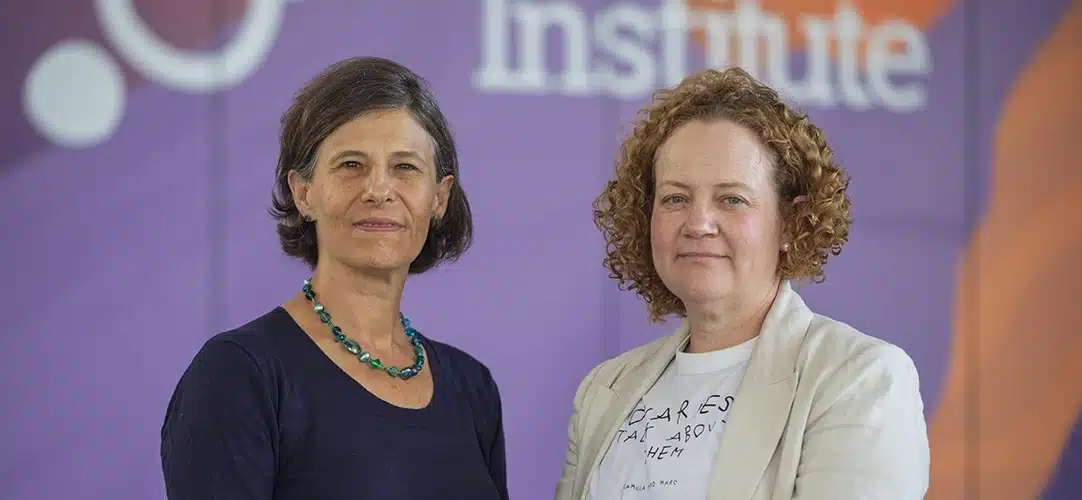
Challenges in Early Detection – Ovarian cancer symptoms often mimic common conditions, leading to delayed diagnosis. Awareness of risk factors and persistent symptoms is crucial for early detection, which significantly improves survival rates.
Research and Clinical Trials – HMRI researchers, Professor Nikola Bowden and Dr Janine Lombard, are investigating new treatments, including a clinical trial repurposing an existing drug to treat chemotherapy-resistant ovarian cancer.
Understanding Risk Factors – Key risk factors include age (50+), family history, BRCA gene mutations, and reproductive history. Women should track symptoms and advocate for further testing beyond routine smear tests, which do not detect ovarian cancer.
An ovarian cancer diagnosis can be a time of fear and great uncertainty.
Every year, roughly 1,500 Australians are diagnosed with ovarian cancer and two out of three are diagnosed at a late stage, where treatment is more difficult.
University of Newcastle researcher, Professor Nikola Bowden, from HMRI’s Equity in Health and Wellbeing Research program, and Medical Oncologist Dr Janine Lombard, from the Calvary Mater Hospital and HMRI’s Cancer Detection and Therapy Research program, are both involved in research aimed at discovering potential new treatments for the disease, and say part of the problem is that common symptoms can mimic other, less serious, ailments.
“It’s sneaky,” says Professor Bowden. “The symptoms are typically things that women deal with all the time as part of their menstrual cycle, perimenopause, or even from urinary tract infections. It also tends to appear in the decades where women are busy with teenage children at home and possibly elderly parents to care for. They aren’t always in a position to prioritise themselves and their own health.”
However, early detection can make a pivotal difference; if the disease is picked up in its very early stages, women have a 70% chance of being alive and well after five years. Understanding risk factors and being able to advocate for yourself if you have persistent symptoms is crucial, says Dr Lombard.
“It’s also important not to be lulled into a false sense of security just because you go for regular smear tests (pap smears),” she says. “Smear tests only test for cervical cancer, not uterine, ovarian or other gynaecological cancers. So, if you are worried about ovarian cancer, it’s essential to take a proactive approach.”
Know your personal risk factors
Before stepping into a doctor’s office, Bowden and Lombard recommend you take time to understand your personal risk factors. While the exact cause of ovarian cancer remains unclear, certain things can increase your risk, including:
Understand the symptoms
Ovarian cancer can be difficult to detect early because its symptoms often mimic those of other, less serious conditions. However, symptoms may include:
While these symptoms can be caused by other conditions, they are worth mentioning to your healthcare provider, especially if they persist or worsen over time. Dr Lombard recommends keeping a diary of symptoms; when they start, how often you notice them, any increase in frequency or severity, etc.
“Remember, ovarian cancer isn’t hugely common,” she says. Diagnosis is often delayed because it mimics things that are much more likely, statistically, such as UTIs or endometriosis.”
New clinical trial for ovarian cancer on the horizon
Dr Bowden and Dr Lombard are waiting for approvals to start a new clinical trial involving the repurposing of an existing drug to potentially treat platinum-resistant ovarian cancer (ovarian cancer that does not respond to chemotherapy) in the near future. They’re cautiously optimistic for what the future may hold.
“Cervical cancer is on the brink of being eliminated* in Australia in the next decade thanks to the development of the HPV vaccination program, while screening programs mean early detection – and treatment – are becoming the norm,” says Dr Lombard. “Each of these outcomes are the result of medical research. Wouldn’t it be incredible if we could do the same for ovarian cancer too?”
*The World Health Organisation’s definition of elimination is less than 4 cases per 100,000 women.